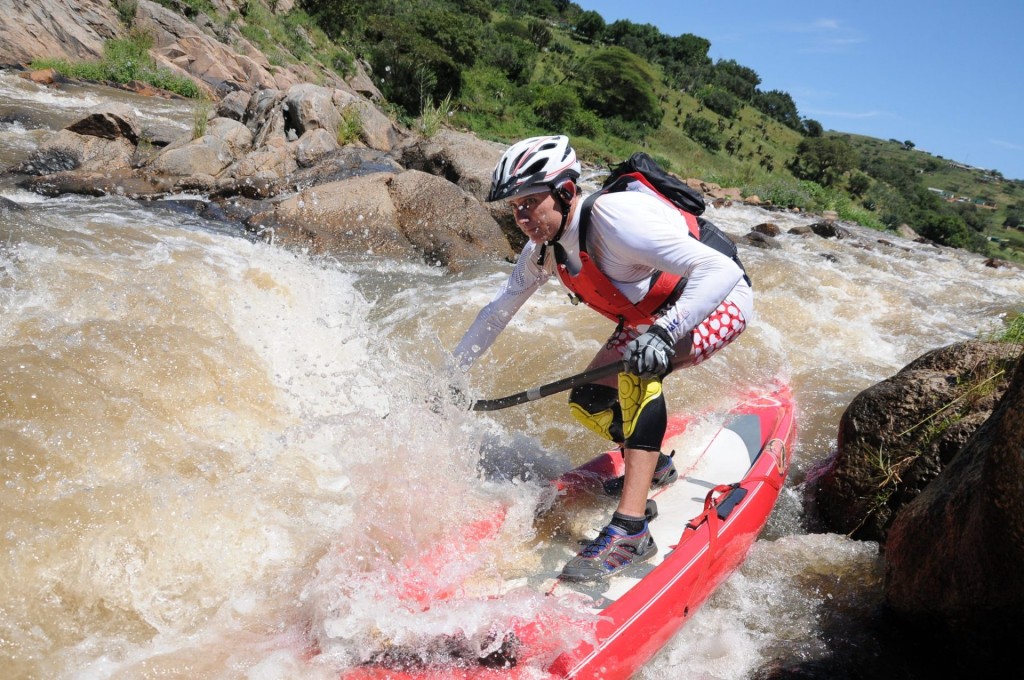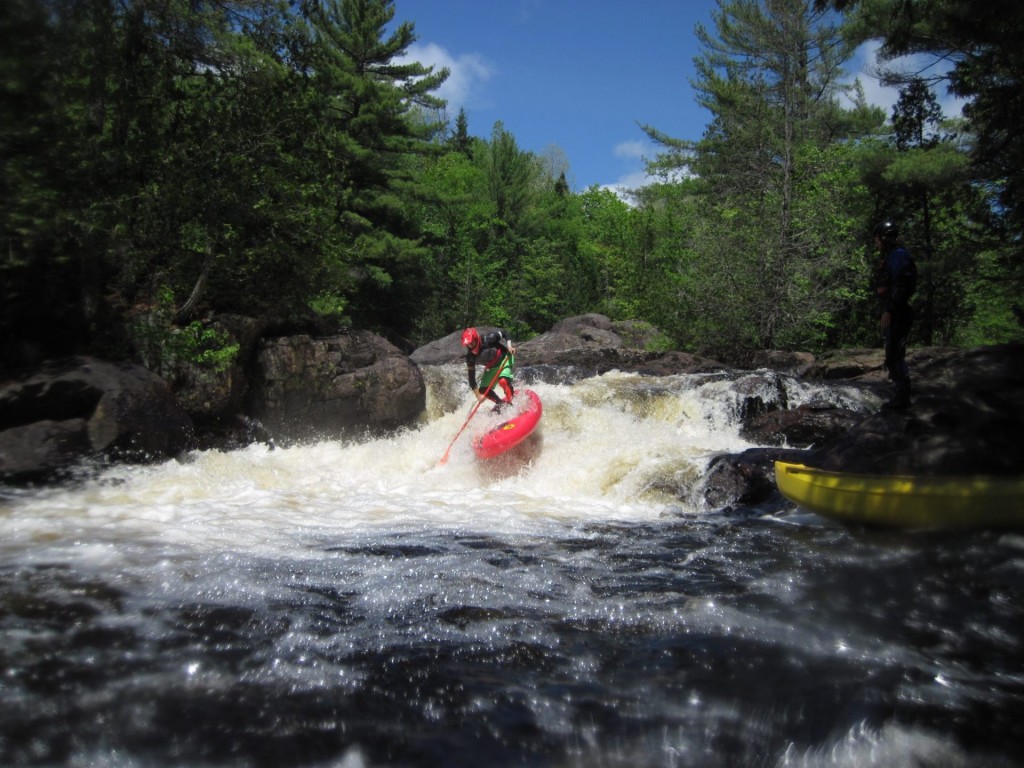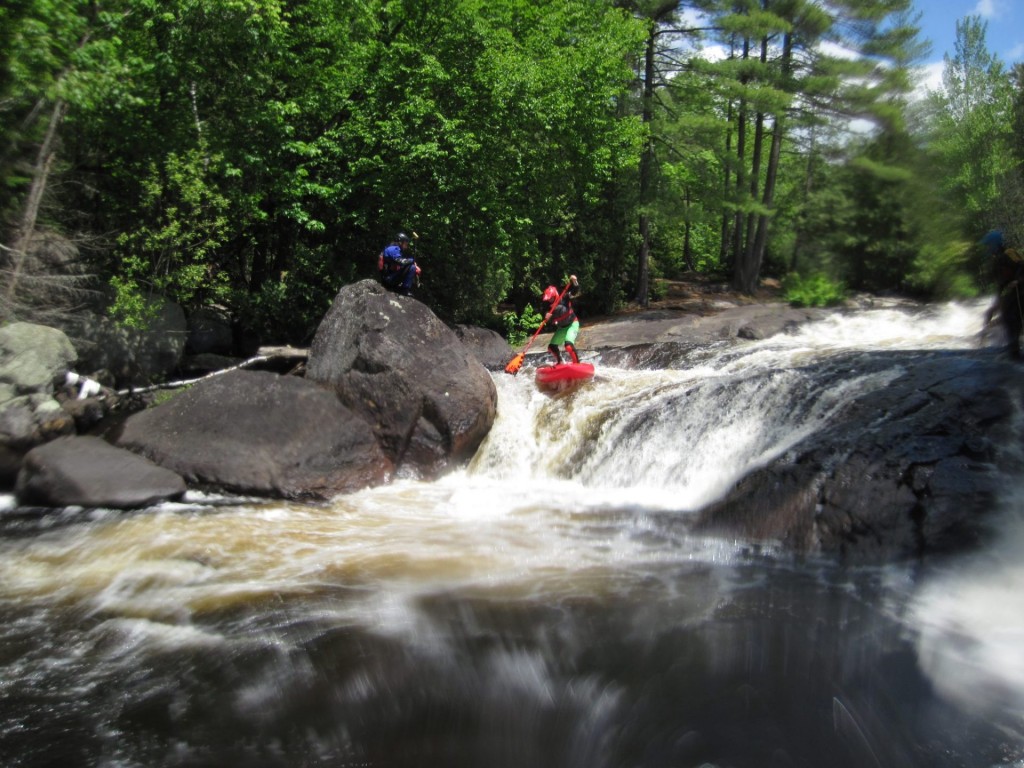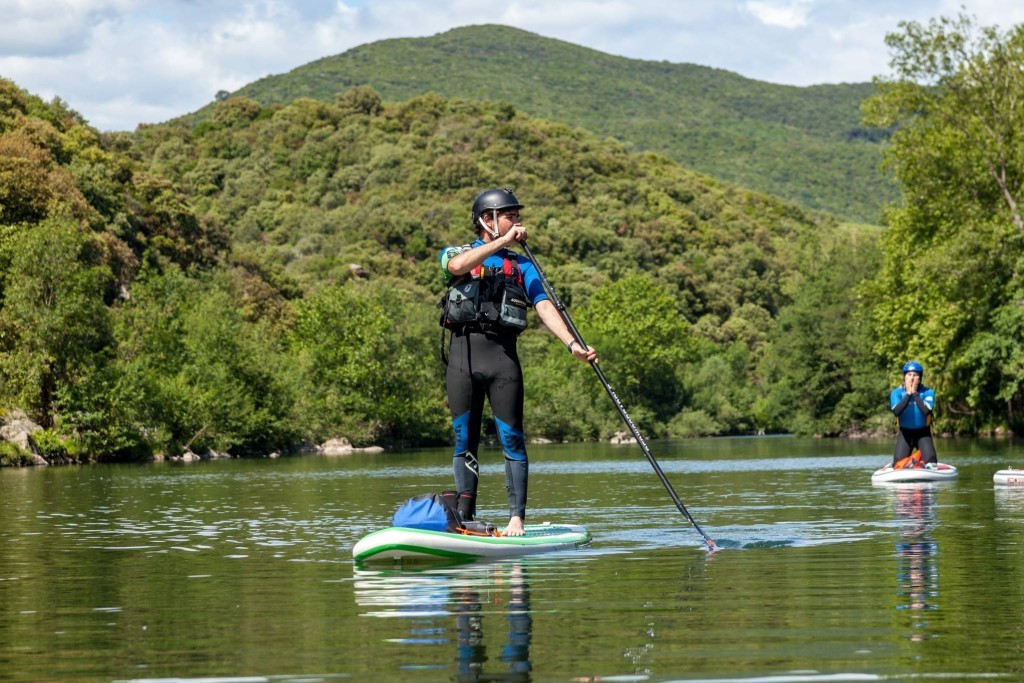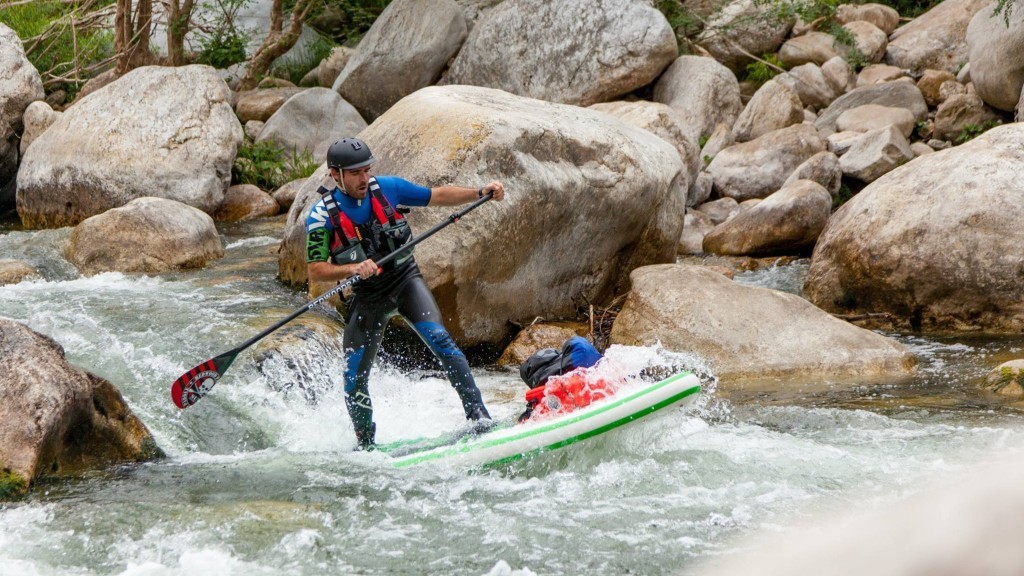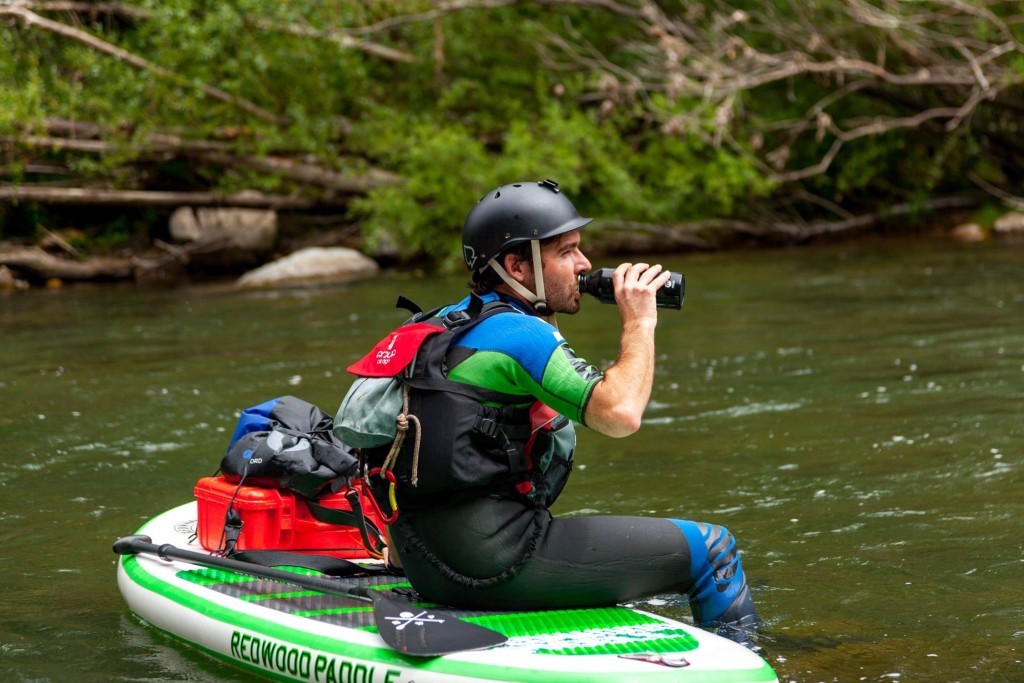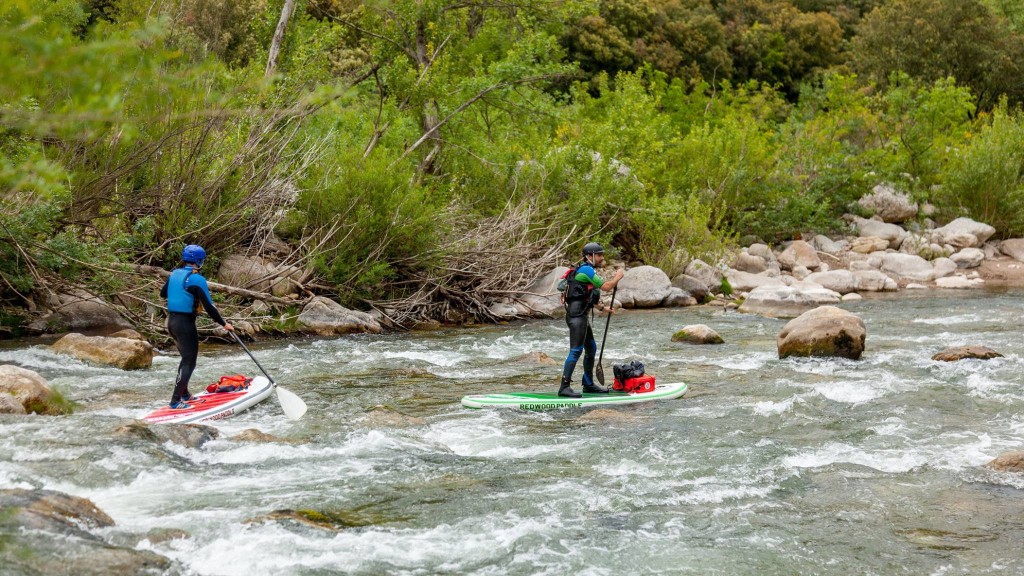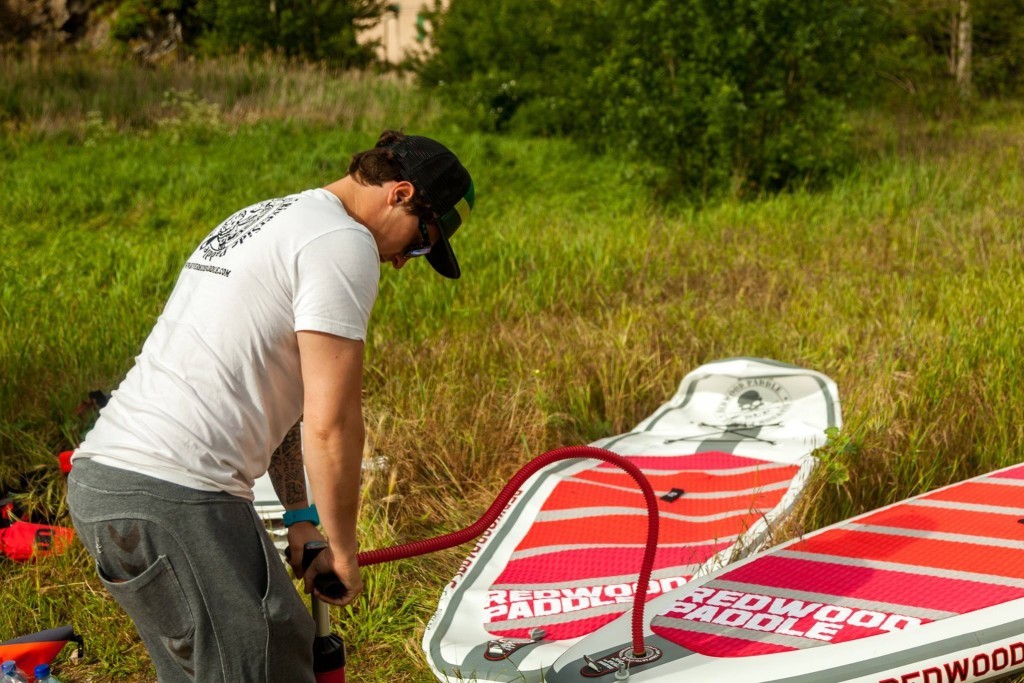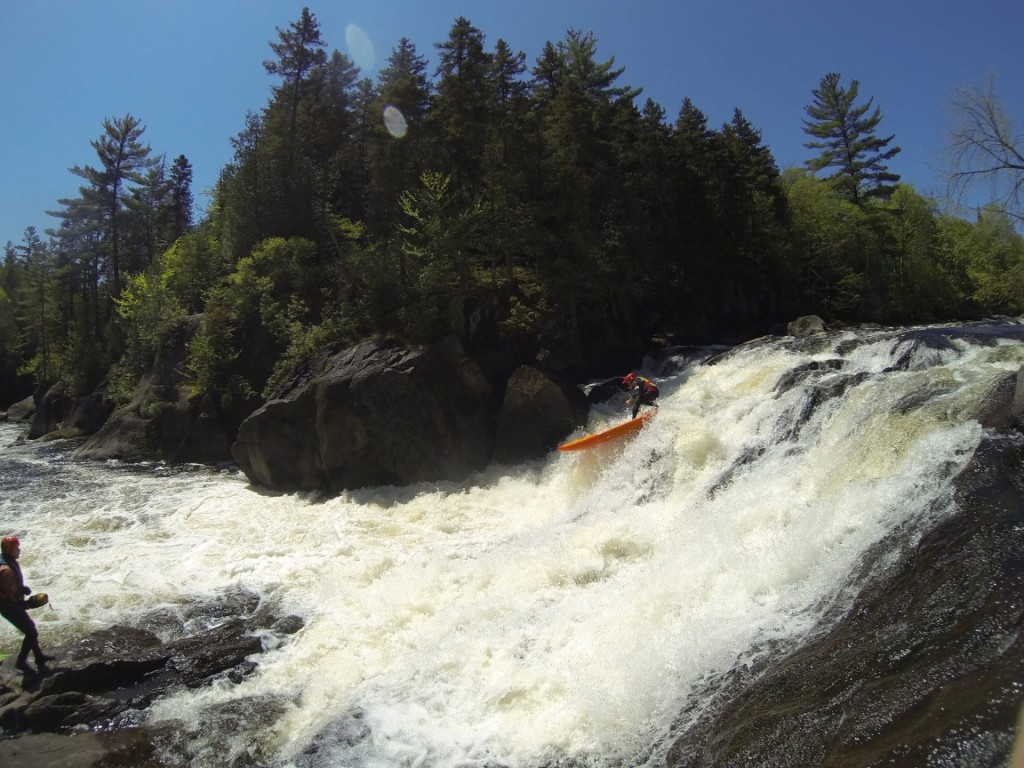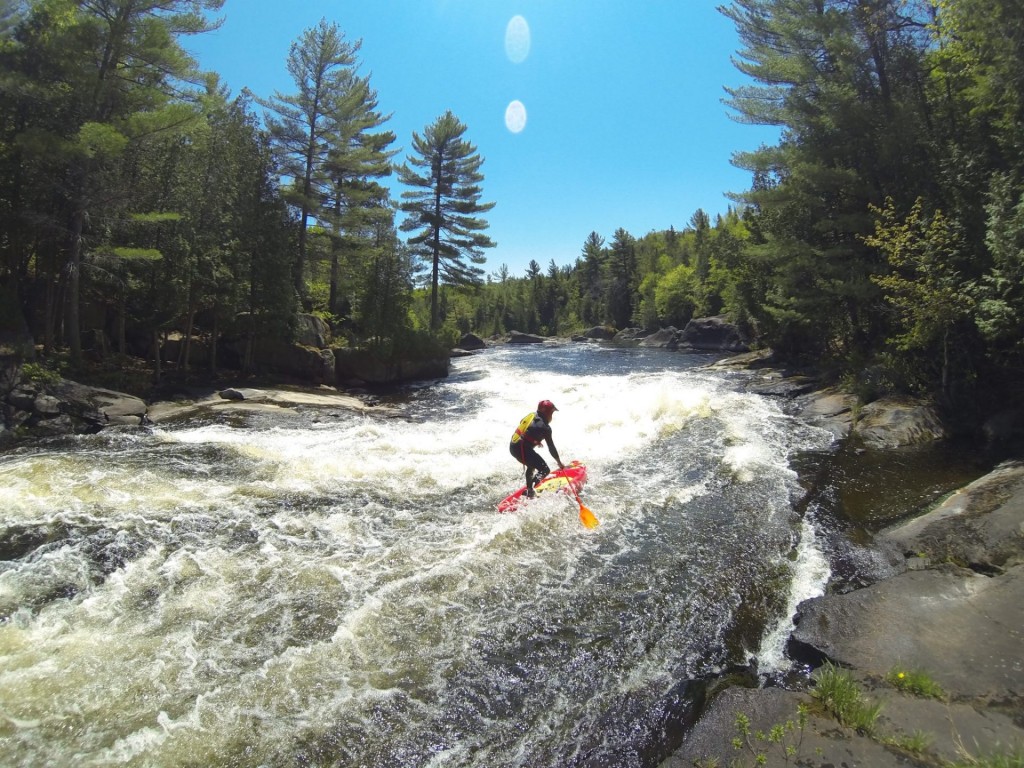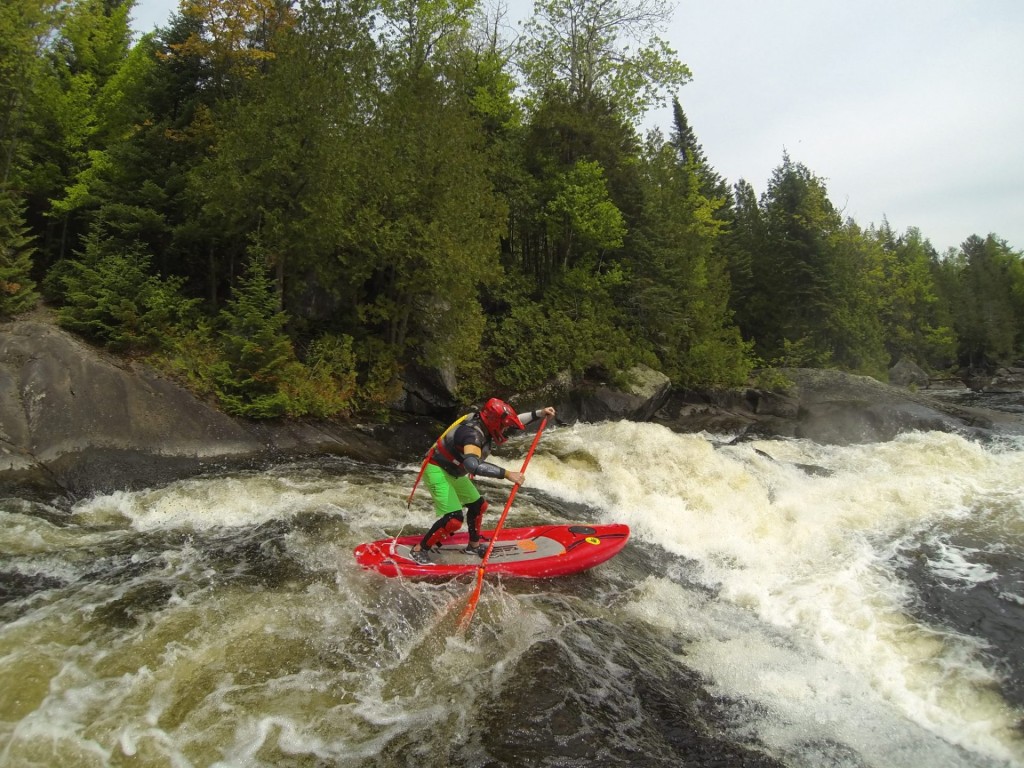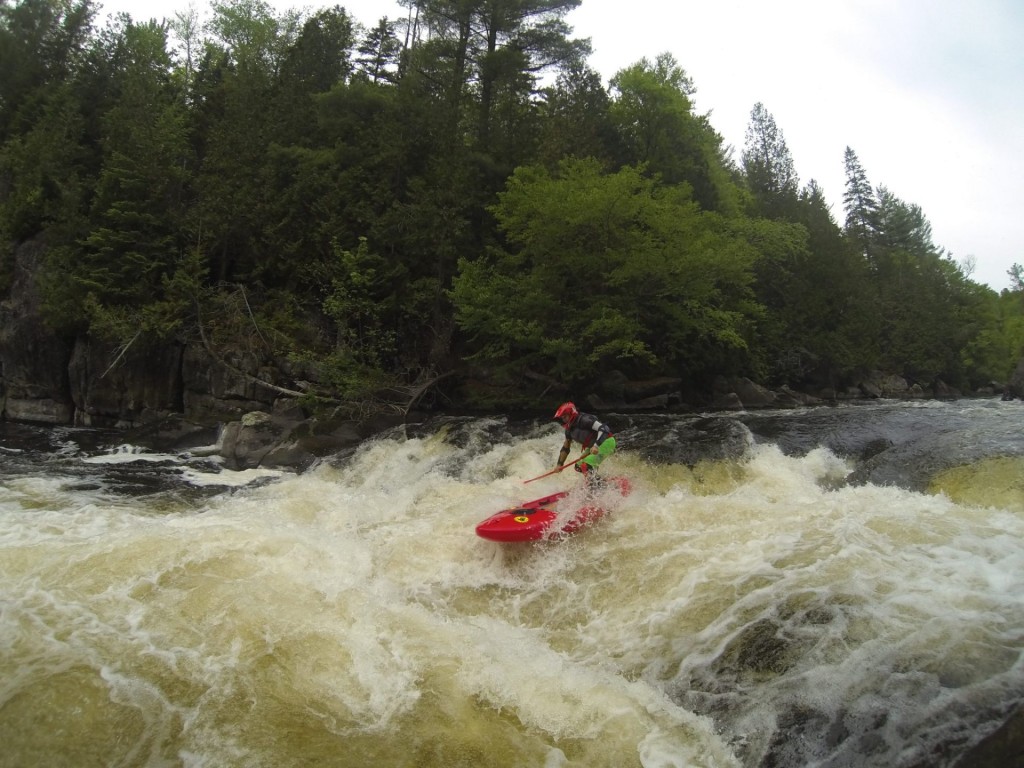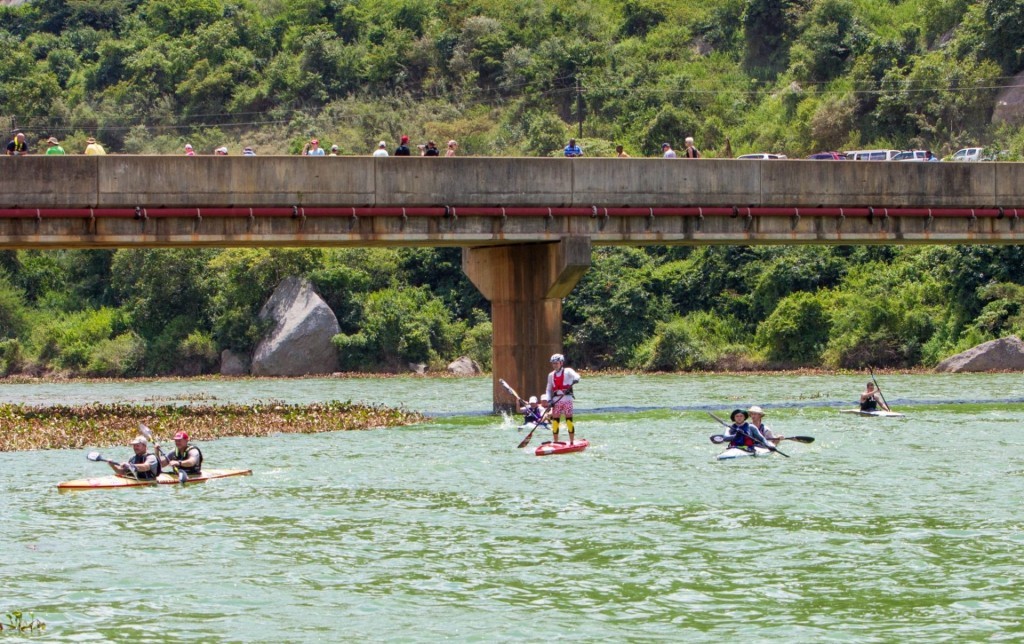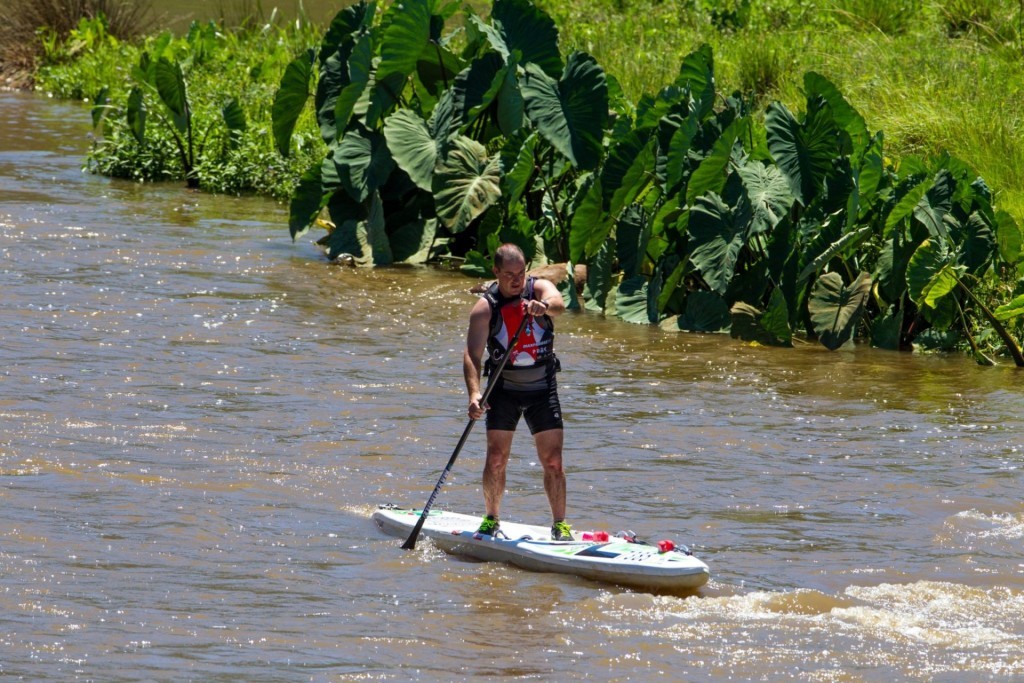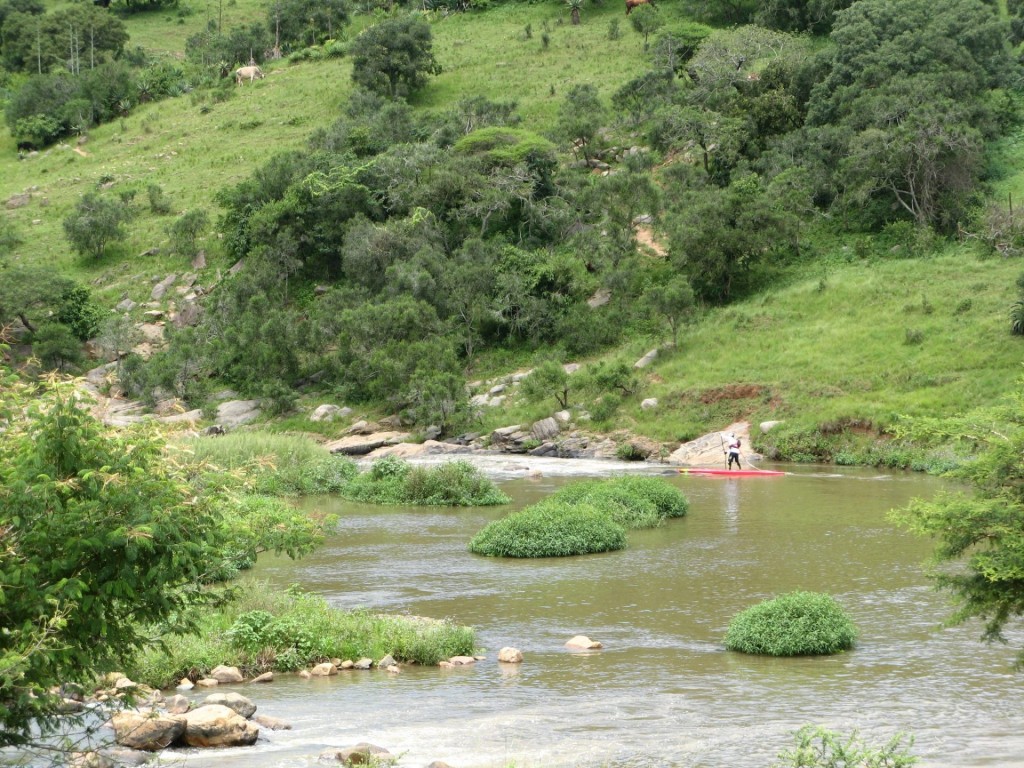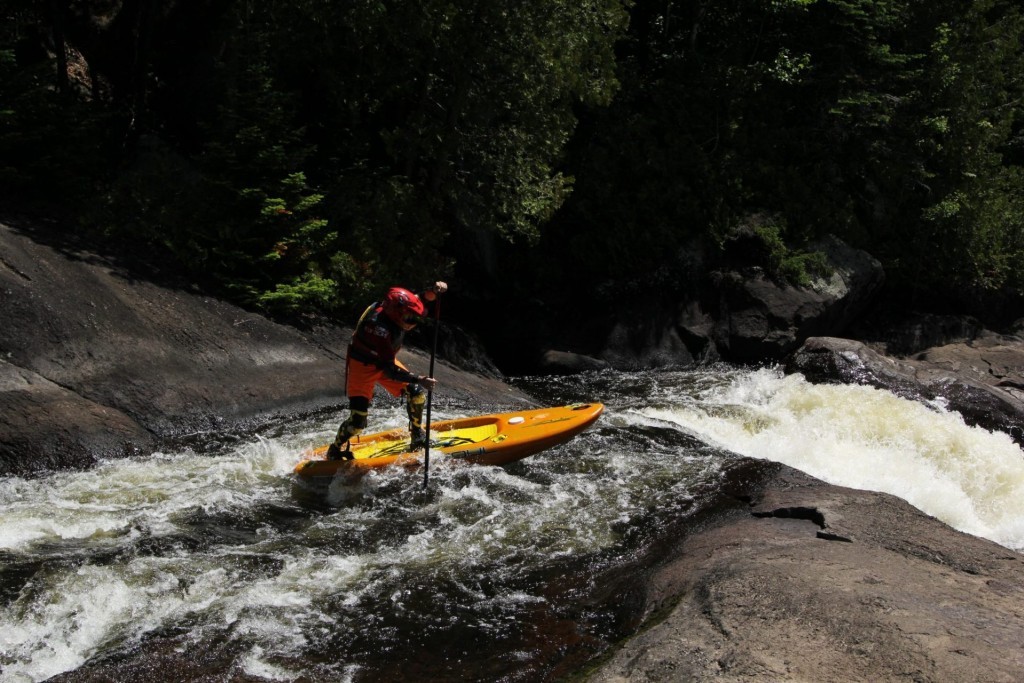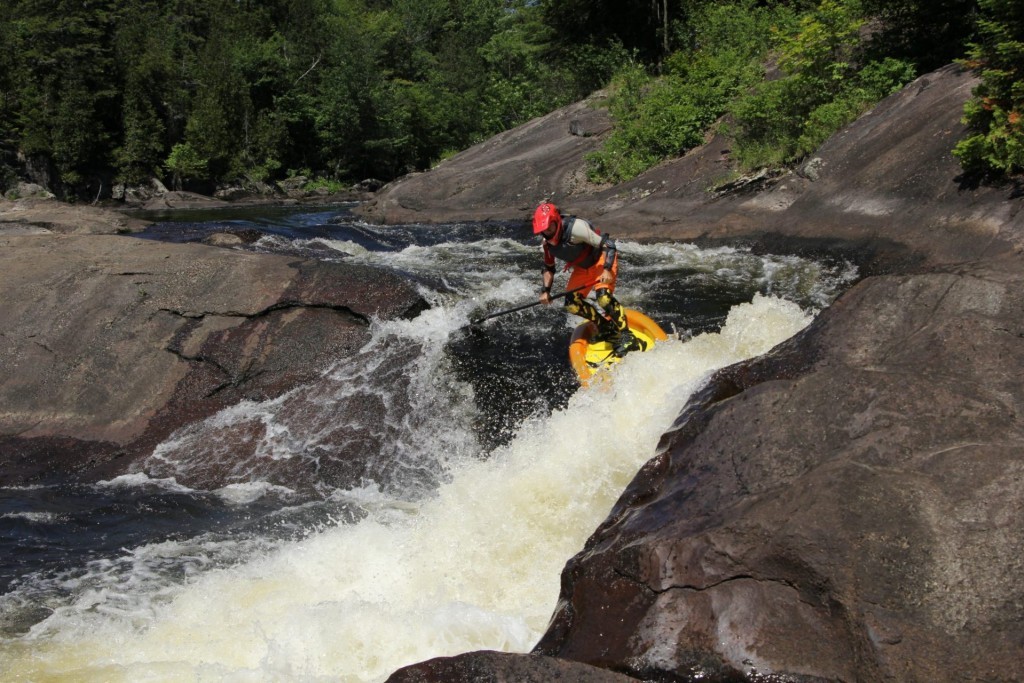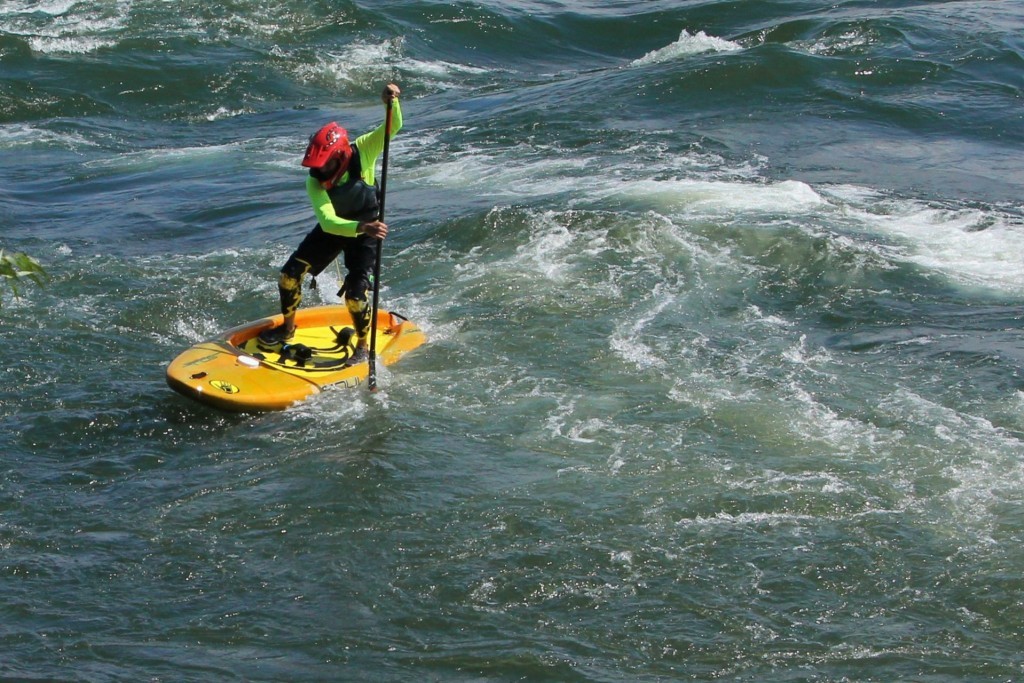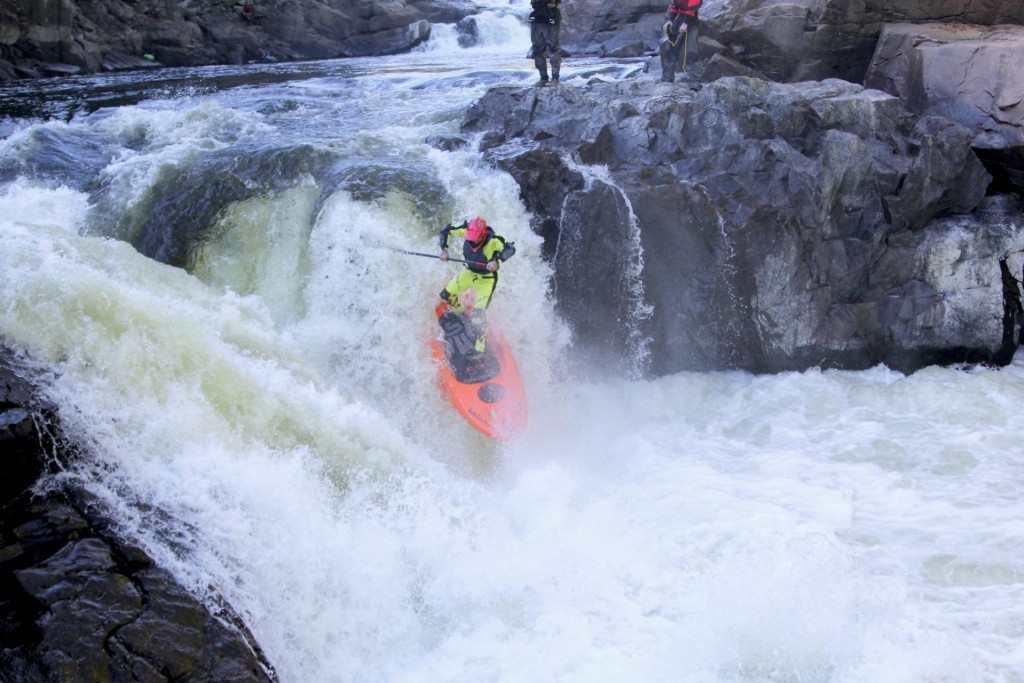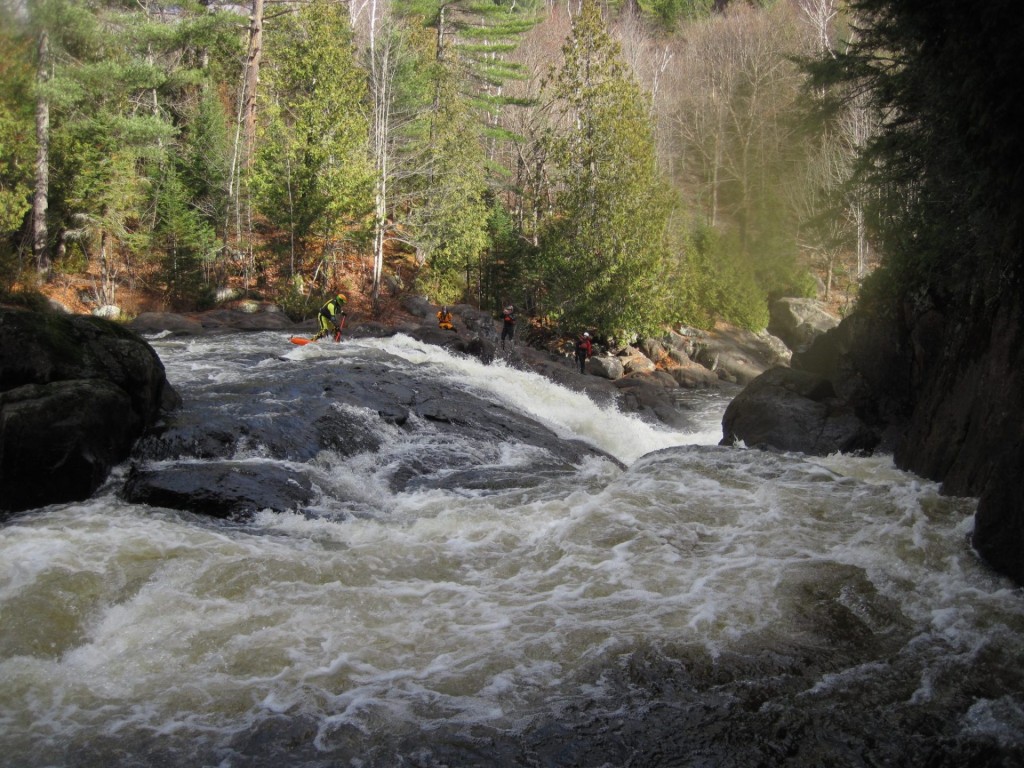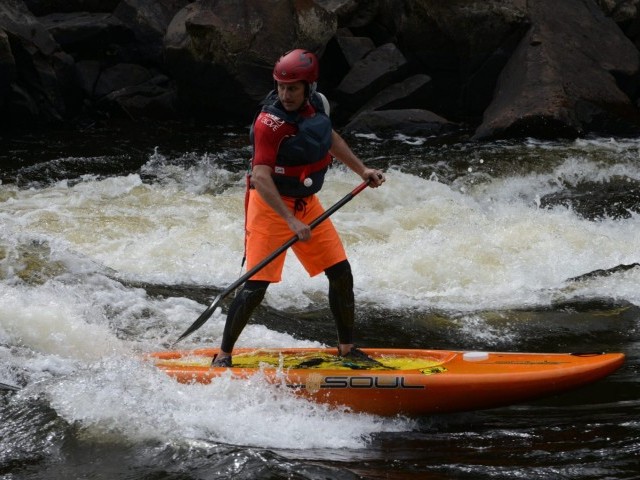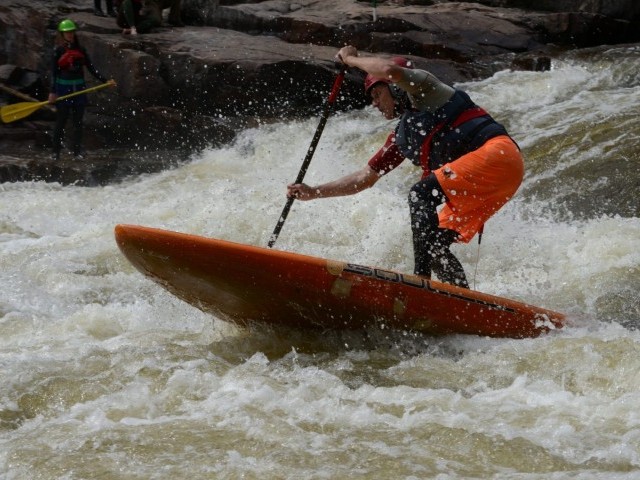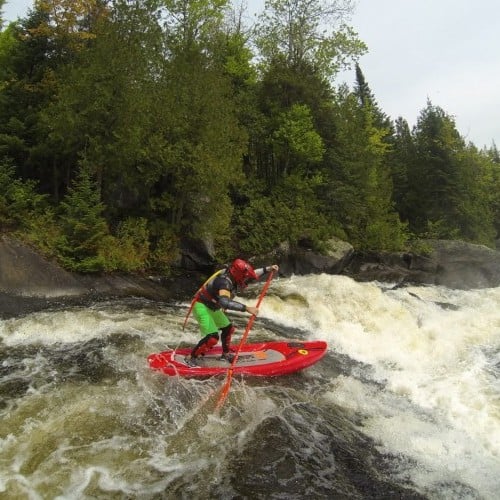
An introduction to River SUP
Technique / Advanced
Introduction
Having covered the “mainstream” (no pun’s intended) flat water, surf and downwind paddling disciplines we feel it is certainly appropriate to ramp up the ante somewhat and introduce SUP river paddling.
Consider it the “downhill” mountain biking version of stand up paddling as opposed to cross-country riding - with all the relative obstacles, challenges and body protection being duly warranted.
With big rivers lacking, here on the island, I contacted a few friends who have been only too happy to share their insights, experiences and words of warning, namely Corran Addison, Brian Beveridge, Dean Bottcher and Brendon Germaine with regards to river running on paddleboards.
First things, first
At this stage, you may have successfully mastered bodies of “moving water” in the open ocean - either in the form of surf “surge” in the waves or wind swell and currents during down-winders.
The river environment, however, introduces a unique set of variables that, like the sea have to be fully respected and understood - before “jumping in”.
As with the sea, current strength flow and direction are crucially important. How to enter the “flow”, maintain a heading, negotiate possible obstacles and most importantly how and where to exit the “flow” all have to be considered before you even get wet.
Planning, understandably - is incredibly vital to ensure the day’s activities are conducted in a manner that is safe and controlled.
Expect the best – but be prepared for the worst.
Comparable to “off-shore” paddling and down winders, the buddy system is highly recommended. Also, it is vital that you learn both the river grading system, there is a great video about this in the videos section of this article, be sure to watch it. Equally important is the River Hand Signal System, if you click HERE, you can see an example of that.
Do not attempt to paddle on your own – in the event of experiencing difficulties a two-person (or more) setup will help in facilitating the necessary alert to rescue authorities.
River paddling is generally a one-way journey affair, requiring a caddy (or two-car drop system) to ensure that someone will be there to transport you and your gear home.
Safety equipment and protective gear
You are going to swim – it’s as simple as that, understand this, before you even consider getting into the river. Dress for the slide, not the ride as they say in motorcycle riding.
For a better look at the needed safety equipment video, you can see it here: https://youtu.be/eUyhkoY0yEw
Carefully consider the following, when investing in gear and equipment:
Board shorts / Rash vests / Wetsuit or Dry-suits
Temperature - in warm rivers board shorts and a “rashie” rash-vest will usually suffice. In colder rivers involving glacial melt conditions, a dry suit will provide greater levels of comfort than a standard wetsuit from the cold as well as provide additional “cushioning” for your body.
Helmet
In the ocean, the sandy beach bottom helps to generate the waves whereas rocks littering the bottom of the riverbed generally form river rapids. Falling headfirst in the surf onto a sandbar generally speaking - is not the “end of the world” but, having a fall at the top of a rapid section without any protective head gear will seriously - ruin both, your day (and that of your paddling companions) in a matter of seconds.
Invest in a full-face helmet – a good one!
Carbon helmets are great in reducing overall weight and providing maximum protection - but can be quite pricey ($400.00+)!
Plastic helmets, on the other hand, a somewhat “cost-effective” alternative at ($35+). It’s your head – what’s it worth to you?
Vents/no vents on your helmet can help to provide additional comfort depending on the climate to maintain a regulated temperature. A helmet is a piece of equipment that is easily replaceable but, your head isn’t – make sure it is appropriately protected at all times at a cost that best suits your affordable budget.
Body Padding/Armour
Knee pads, arm pads, shin pads, torso and spinal body-formed protection, are also highly advisable (in shallow and challenging river conditions) and with many “impact protection” products that can certainly help in reducing overall weight while offering maximum body protection.
Shoes
Comfort and practical performance is the goal here. Durability and the provision of maximum traction in wet and slippery conditions are also vital. Excellent adhesion with the deck of your paddleboard is also crucial (for obvious reasons) to prevent slipping and sliding in inopportune moments as well as to scramble over rocks and alongside riverbanks - and allowing for “quick drying”.
Lifejacket/ PDF
PDF/ life jacket (coast guard level III) is highly recommended, with a tight fit that allows for unrestricted arm and shoulder movement but prevents “riding” up from your waist to your neckline. This could result in possible strangulation if you find yourself “pinned” between a rock and the flow of current forces the device to “ride upwards”.
Leash
A leash with an emergency “quick-release” is strongly advised to allow for “ease of access” to the quick-release mechanism in the event of an emergency “cut-away” situation. You can either use a system that attaches to a quick release on your life jacket, or a separate break away belt. Always wear a coiled leash that has multiple break away points.
Many people have died using ankle leashes in the river. Don’t be the next one. There is an excellent example of a proper river safety leash in the video section of this article.
Unlike the surf, which has distinct “lulls” the river - is unforgiving and unrelenting and is generally, always moving within sections. In many cases, once you have committed to running a particular section – there is no going back!
River knowledge
Paddlers who excel at river SUP draw on a wealth of prior river experience and understand its intricacies, moods and characteristics. This is not something that can be taught in one SUP river session or one technique article - it is hewn into you over time.
Attend local river proficiency programs in your area as an introduction to river running, either kayak, rafting or river SUP orientated day courses to learn the fundamental basics under the watchful eye of registered instructors and to generate some basic proficiency, with the appropriate rescue personnel on site.
Selecting a river paddleboard
We are very fortunate to have such a variety of models on the market today that provide the ideal “go-to” starting point for a river paddleboard.
River Stand Up Paddleboards
Volume and stability are the most important points to focus on when selecting your river paddleboard. Be cognisant of the fact that you will be wearing additional protective layers and that the culminated weight is going to significantly influence the type of board you will ultimately end up acquiring.
The types of rivers you intend running are also going to impact your decision for obvious reasons. A class 1 river section that is slow flowing and calm (without the existence of rapids) requiring little, or no, assertive manoeuvring will allow you to make use of a board that provides slightly more biased emphasis on performance. Depending on what your focus is, you could opt for a longer, faster racing style board, or a board that’s slightly more “surf” inspired in shape and is highly manoeuvrable. It all depends on what your personal focus and the prevalent river conditions are.
For most of us, we elect to enter the river for the thrill of overcoming rapids and technical sections (class 2+) requiring manoeuvrability, athletic dexterity and a board that provides the necessary stability and impact resistance to the obstacles that lie in wait.
Composite boards are certainly an option they are expensive to buy and can last a season or less, depending on how badly you abuse it. Most people tend to gravitate towards one of two options; plastic boards (made like the white-water kayaks that are commonplace in rivers) and inflatable boards (more like white-water rafts). Both have advantages and disadvantages, and so again it comes down to your personal needs and the prevalent river conditions.
Inflatable boards offer convenience at the expense of performance. They roll up into a bag for transport, can take a decent amount of abuse, and are relatively light. However they are limited in design because of the technology, and so you find yourself standing on a board that is either too thin at the rails to offer enough forgiveness in challenging water, or standing too high in order to get thick rails, which reduces stability. The material also tends to stick to rocks when sliding over them, resulting in more frequent falls. The massive availability of these boards has made them to a large degree the go-to option.
Plastic boards allow for advanced design, as compound rocker curves, thick forgiving rails, recessed low standing areas, high impact resistance and a slick surface that slides effortlessly over rocks are all part of these boards, based on 40+ years of advanced kayak design, so they are more refined. They are heavier than inflatable boards and have to be transported on roof racks like kayaks, as opposed to being rolled up. There are also fewer design options out there as the moulds are expensive to make and so few companies have invested in the technology.
Two examples of excellently executed designs of these two prevalent technologies are the Starboard Stream inflatable, developed by river pioneer Dan Gavere, and Soul Waterman’s Firestorm plastic board, designed by waterfall running enthusiast Corran Addison.
Paddle
Your SUP river paddle is to be considered as crucial a piece of equipment as Indiana Jones’s ever trusty, whip! It will be used and abused for a manner of river functions besides just paddling.
Beautifully crafted lightweight carbon fibre race paddles are understandably, not the preferred go-to choice for river paddling, as longevity and reliability will be called into question sooner or later.
In this instance weight is compromised for high tensile strength and reliability, various composite materials such as a Carbon fibre and Kevlar weave may be used in addition to standard fibreglass models.
There is an added advantage to extra paddle weight – like a tightrope walker's balance bar; the heavier paddle offers a “last ditch” recovery device as the heavier paddle can be swung into the air opposite your falling direction to counter balance you, and offer the chance of a save that lighter paddles will not.
Fins
Make use of flexible fin / flip up fin system as opposed to a fixed “zero flex” high-end set of carbon fins that are not going to be able to stand up to the levels of punishment that they are subjected to.
The reality is that a flex fin will most likely not break when hitting rocks, but no matter how flexible it is, it’s going to throw you off the board. For this reason, people with flex fin systems have gravitated towards paddling finless (though you loose substantial directional stability and drive), or towards flip up systems, which offer the best of both worlds.
River paddling technique basics
Make use of eddies
Eddies are the areas of slower moving bodies water to the left or the right-hand side – just below or after a rapid. As a result, they present the perfect location to both enter and exit the water as opposed to trying to fight the current and flow (while negotiating rocks and various other obstacles) of the river in the faster-moving rapids and bodies of water.
All positioning and manoeuvring conducted within eddies will help you to conserve energy and maximise efficiency in the long run, so it is recommended to make use of eddies often to ensure that you pick an appropriate “line” down the river using the eddies to make the necessary alignment, adjustments.
“Ferrying”, highlights a very pivotal step to master - as this enables the proficient paddler to transition effortlessly from left to right riverbank (and vice versa) without losing ground (being drawn downstream).
Surf stance
Basic surf stance centred along the “stinger” line using your front foot (right foot in front for “goofy footers” and left foot in front “natural footers”) to accelerate speed and your rear foot to initiate turning centred along the stinger line with your weight distributed down the centre of the board
Advanced/Modified surf stance
Advanced/Modified surf stance places greater bias towards either rail (this allows for greater lateral board control and absorption of “wave bumps” with your knees as opposed to that of standard surf stance.
Neutral Stance
Neutral or “square stance” is used in clam flat-water with your feet and hips parallel.
The Tripod
As with rock-climbing, three-points of contact are safer and provide far better control/ stability - than two. River paddle boarding is no exception as the paddle acts as the “third leg” completing the “tripod effect”.
By entering a rapid section on the river while maintaining your balance in “modified surf stance” – additional balance and control can be added by planting and drawing a solid paddle stroke and repeating this technique to maintain forward momentum and drive to effectively overcome the obstacle.
Board Edging
The edge of the board (or rail) can aid in driving the board in a specific direction. The rail compliments the task of the fin/s in providing additional surface area to necessitate “tracking” and steering. This can prove very useful in cutting across fast moving water to access an eddy.
Running waves
Confidence and experience are going to strongly benefit progression. Start well within your comfort levels and progress gradually and you will ultimately be more successful in larger and more powerful running and standing waves.
How to recover from a fall
One of the key reasons to wear a leash is that in falling, which we all do, you can allow yourself to fall far from the board, and still recover it. People who paddle without leashes tend to try to fall close, which means they fall straight in, penetrate deeper, and thus hit more rocks.
Leashes allow you in a fall, to propel yourself away from the board, rotate in the air, and land in a back flop with minimal penetration, and also as far as possible from the thing that made you fall, to begin with. Then a quick leash tug, and you’re back on board – the safest place to be.
If separated from your board the best practice is to lay flat on your back with your feet pointed downstream (especially in the event of falling at the head of a rapid section). The consensus is that your body will be less likely to get snagged/pinned on obstacles if you trust in your PFD and Life jacked to maintain positive buoyancy and keep you floating above the rock-strewn river bottom.
With your feet are in front of you, they can be used to lessen the impact on obstacles by absorbing the shock (bending at the knees) as opposed to impacting with your head.
Always try to remount your board and lie flat allowing your board to protect your body from possible rock impacts steering towards eddies and out of the flow.
Try to swim with one arm (one arm to grip your paddle) try to swim for eddies (left or right) and out of the main flow of the river to get to the banks more efficiently.
The golden rules of river running:
- Never paddle alone
- Never paddle flooded rivers
- If you’re starting out, paddle with people more experienced than you
- Stay away from trees – trees will kill you. They are not a safe haven.
- Never wear an ankle leash. Always use a waist break away leash
- Wear the correct protective armour for the conditions
- Learn to fall without penetrating the river and to remount effortlessly
- Learn hand signals and river grading as a group, so everyone is on the same page
- When in doubt, scout
Surround yourself with those who are more knowledgeable and experienced and be accustomed to being well prepared, conscientious and ever respectful of what you are about to embark on, and you will certainly reap the associated benefits nine times out of 10.
As always, safe paddling, sunshine and smiles to you all!
This technique article was in Issue 4 of Tonic Mag.
By Bryn James
Bryn is a highly respected waterman who is very popular amongst his peers. Having been the competition director for the longest running multi sports events (Jeep Apparel South Coast Carnival in South Africa), he continues to be a fierce competitor in professional SUP and Kitesurfing events, spanning 15 years. His affinity for the sea has no bounds and he is perpetually motivated to share positive ocean experiences with everyone he meets!







